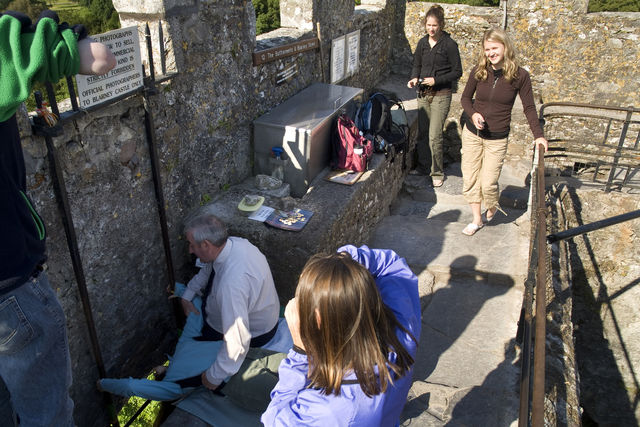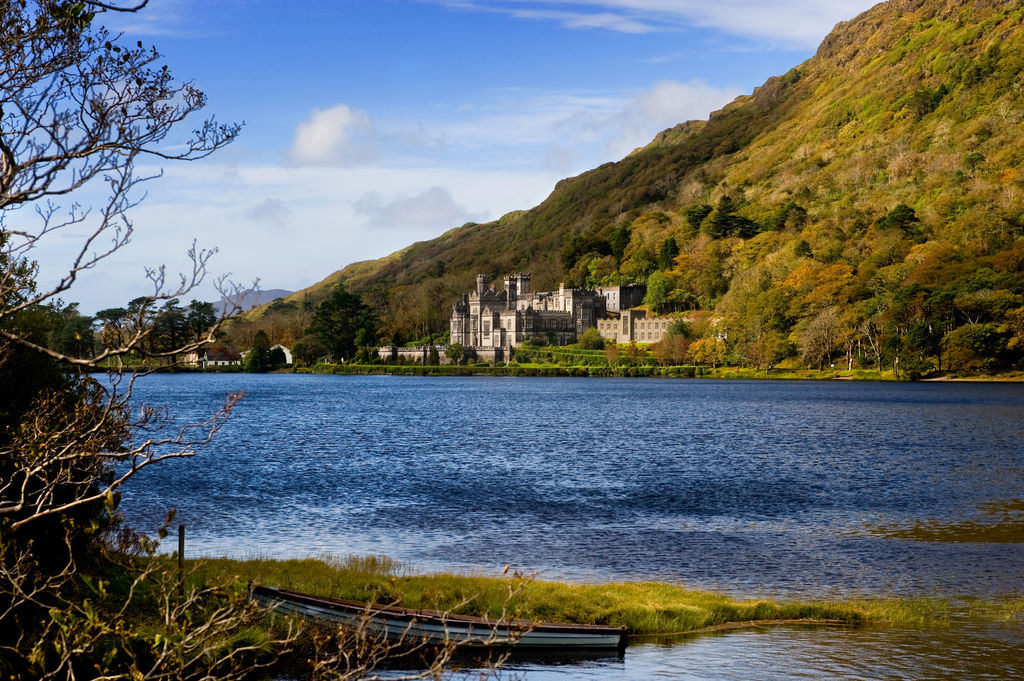The Castles of Ireland
Must-See Castles in Ireland
Kiss the Stone: The Blarney Castle
Steeped in history and magical charm, Blarney offers the visitor a host of wonderful things to do and places to discover. Blarney, one of Ireland’s most picturesque villages, is set in the beautiful wooded countryside, just 5 miles from Cork City. It is an ideal base to visit the many sights of County Cork and County Kerry. High on most people’s list of things to in Ireland is a visit to the famed Blarney Castle and kissing the Blarney Stone.
Blarney Castle presents a fairytale picture, its tall towers are set within extensive gardens containing such romantically named landmarks as the Druids Altar, the Witches Kitchen, and the Wishing Stairs. All of which adds to the whole magic of Blarney Castle. The castle is now a partial ruin with some accessible rooms and battlements. The castle’s history originally dates from before AD 1200, when a wooden structure was built on the site. The prevailing castle was built in 1446 for Cormac MacCarthy - then King of Munster. The MacCarthys held sway over Blarney and Munster throughout the many tumultuous centuries of Anglo-Irish conflict until the defeat of the old Irish nobles at the Battle of the Boyne in 1690, after which the Lord of Blarney was exiled.
At the very top turret of the castle lies the Stone of Eloquence, better known as the Blarney Stone. Over 200,000 people visit Blarney Castle each year with the purpose of kissing the Blarney Stone to be bestowed with the “gift of gab”, the talent for eloquence that the Irish famously possess. The kiss, however, is not achieved casually. To touch the stone with one's lips, the participant must ascend to the castle's peak, then lean backwards on the parapet's edge, over a sheer drop, as the wind whistles around your ears. This is traditionally achieved with the help of an assistant. But it’s all perfectly safe and you’ll go away with something new to talk about, and a touch o’ Blarney.
Though kissing the stone is a relatively new ritual, the association with smooth talking and Blarney goes back many centuries. When Queen Elizabeth I of England sought to impose her rule on Ireland's Gaelic Chiefs, The Lord of Blarney, Cormac MacCarthy, proving most elusive, would reply to her demands with flamboyant flattery rather than submission. The Queen was said to reply, "this is all Blarney, he never means what he says and never does what he promises." And so, the word Blarney came into the English language, eloquent words that flatter or deceive. There are many legends as to the origin of the stone, but some say that it was the Lia Fáil—a magical stone upon which Irish kings were crowned. Others say that it was created by a witch during the Middle Ages.
Bunratty Castle & Folk Park
The most complete and authentically restored and furnished castle in Ireland, a colorful folk park and the famous Bunratty Castle Medieval Banquets. This is one tourist attraction you are not going to want to miss!
Bunratty Castle, North Munster, is sited on an original Viking Trading Camp which dates back to around 970 and is the last of four castles to be built on the site. The present castle was built in 1425 by the McNamara family and remained in their possession until 1475. In the 17th Century, the castle was the palace of the Earls of Thomond and was surrounded by gardens and a great deer park. The castle passed through many hands before falling into disrepair. In 1954, Lord Gort purchased the estate and returned it to its former glory. It is now the most complete and authentically restored and furnished castle in Ireland and it has been open to the public since 1960.
Bunratty Castle is a large tower house, a particular type of stone structure, built for defensive purposes as well as habitation. Tower houses appeared since the Middle Ages, especially in mountain or limited access areas, in order to command and defend strategic points with reduced forces. At the same time, they were also used as a noble's residence, around which a borough was often constructed.
Alongside the Castle is an extensive folk park, particularly popular with families, tourists and schools. The Folk Park is a colorful illustration of Irish life in the 19th and early 20th Centuries. Buildings range from the landlord’s house to the smallest peasant cottage, along with an assortment of village shops, a smithy, two watermills and an excellent collection of old farm implements. There are live demonstrations of bread baking, weaving and pottery making. The 19th century walled garden has been re-created to grow fruit, vegetable and flowers as it did when it was the source of supply to Bunratty Castle.
The famous Bunratty Castle Medieval Banquets were first held in the early 1960s and the event has grown stronger ever since. This is a dining experience not to be missed! Each night the Ladies of the Castle, aided and abetted by the Earl of Thomond’s Butler, welcome guests from the four corners of the globe to dine at The Earl’s Banquet at Bunratty Castle. The entertainment provided by the world-renowned entertainers is a fitting compliment to a mead reception in the Great Hall of the castle, a four-course traditional feast and of course good wine.
Kilkenny Castle
Kilkenny Castle stands dramatically on a strategic height guarding a crossing on the River Nore and dominates the ‘High Town’ of Kilkenny City.
Known as one of the most recognized buildings in Ireland, the castle is steeped in Irish medieval history. It was built in 1195 for William Marshal, 4th Earl of Pembroke to control a fording-point of the River Nore. The Castle is seen as a symbol of Norman occupation. Kilkenny Castle later became the principal residence of the powerful Butler family for almost 600 years.
Through the eight centuries of its existence, many alterations and additions have been made to the building, making it a complex structure of various architectural styles. This 800-year-old Norman castle remains in remarkable condition with many of its original features. Two wings of the castle have been restored to their 19th Century splendor and include a library, drawing room, and the magnificent long gallery. The river wing houses the Butler Gallery of contemporary art. Additionally, a state-of-the-art conference center is situated in one of the castle’s 12th Century towers.
Set amid 50 acres of charming and extensive gardens and woodlands, overlooking the River Nore, the castle has a long-established rose garden, mature trees and an ornamental lake. The castle gardens around Kilkenny Castle are well worth a visit.
Visitors can explore the castle and their grounds at their leisure. In addition to an information sheet, dedicated guides offer information about the castle’s rich history in its period rooms.
Kylemore Abbey
Experience the character and atmosphere of a former castle and enjoy the breathtaking views from the large picture windows which capture and frame the majestic landscape. Prior to becoming an Abbey, it was built as a Castle and private home for Mitchell Henry, a wealthy politician from Manchester, England. The first stone was laid in 1867. With 100 men employed every day, construction was completed in 4 years. The castle covered approximately 40,000 sq ft with over 70 rooms. Today visitors are invited to enter the Abbey where four rooms have been sympathetically restored.
Kylemore became an Abbey in 1920, and is the oldest of the Irish Benedictine Abbeys. The Community of Nuns, who have resided here for 189 years, has a long history stretching back almost 340 years, hailing from Ypres, Belgium.
Visitors to Kylemore are welcome to enjoy the 6-acre walled Victorian garden and the Gothic Church. The Gothic Church was designed to be a ‘cathedral in miniature’ and the interior is said to have been suggested by the beautiful Chapel of St Stephen’s at Westminster. Built by Mitchell Henry, the Gothic Church was built in memory of his beloved wife Margaret Henry who died only four years after the castle was constructed.

